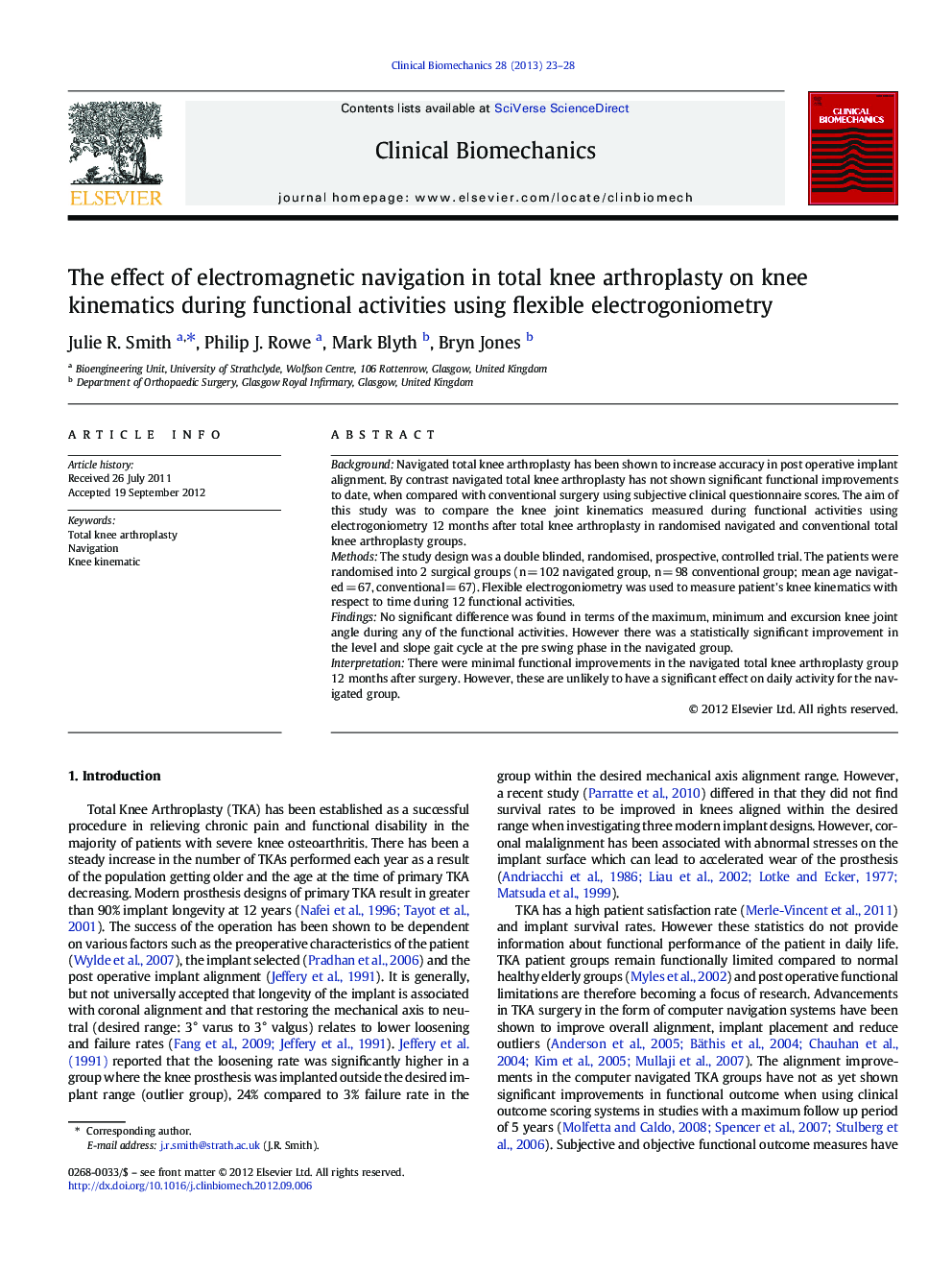| Article ID | Journal | Published Year | Pages | File Type |
|---|---|---|---|---|
| 4050387 | Clinical Biomechanics | 2013 | 6 Pages |
BackgroundNavigated total knee arthroplasty has been shown to increase accuracy in post operative implant alignment. By contrast navigated total knee arthroplasty has not shown significant functional improvements to date, when compared with conventional surgery using subjective clinical questionnaire scores. The aim of this study was to compare the knee joint kinematics measured during functional activities using electrogoniometry 12 months after total knee arthroplasty in randomised navigated and conventional total knee arthroplasty groups.MethodsThe study design was a double blinded, randomised, prospective, controlled trial. The patients were randomised into 2 surgical groups (n = 102 navigated group, n = 98 conventional group; mean age navigated = 67, conventional = 67). Flexible electrogoniometry was used to measure patient's knee kinematics with respect to time during 12 functional activities.FindingsNo significant difference was found in terms of the maximum, minimum and excursion knee joint angle during any of the functional activities. However there was a statistically significant improvement in the level and slope gait cycle at the pre swing phase in the navigated group.InterpretationThere were minimal functional improvements in the navigated total knee arthroplasty group 12 months after surgery. However, these are unlikely to have a significant effect on daily activity for the navigated group.
